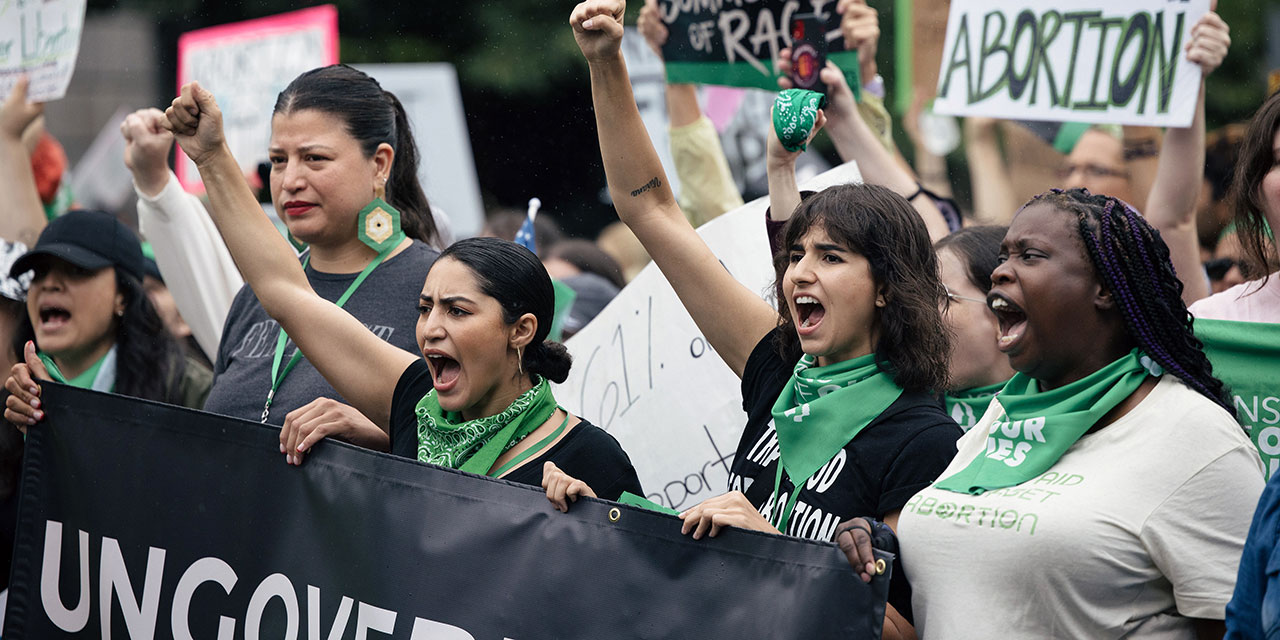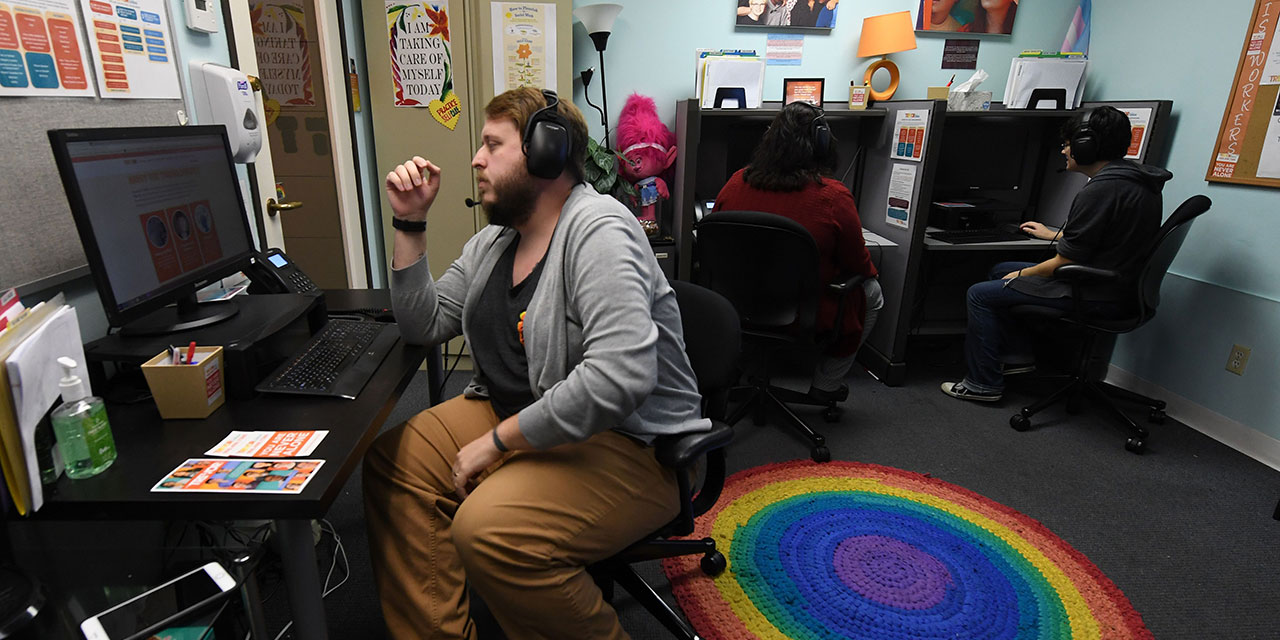Last May, when Donald Trump held a campaign rally at Crotona Park in the South Bronx, he became the first Republican to visit the New York neighborhood for a national campaign event in 40 years. The neighborhood’s congressional district, NY-15, has long been a Democratic stronghold, with a Partisan Voting Index score of D+35 from the Cook Political Report. It is America’s poorest congressional district, with a median household income of just $32,381 in 2021 and more than one-third of households falling below the federal poverty line. Sixty-four percent of South Bronx residents identify as Hispanic, while 31 percent are black; foreign-born residents make up 32 percent of the district’s population.
New York Democrats and members of the mainstream media took offense at Trump’s decision to hold a campaign rally there. But residents who attended the rally had reasons for their interest. In an MSNBC report, many, including first-time voters and longtime Democratic partisans, cited crime, inflation, housing costs, and immigration to explain why Trump attracted them. Such sentiments reflected the concerns of black and Hispanic voters nationally: a November 2023 poll of 1,602 registered voters from the Black Economic Alliance, a nonpartisan group of black business leaders, found that black voters wanted elected officials to spend more time addressing economic issues—including high taxes, a lack of affordable housing, and job creation and workforce development—and less time on social issues such as abortion. A 2023 survey conducted by UnidosUS found that inflation and the rising cost of living, along with jobs and the economy, were the issues most important to this demographic.
Finally, a reason to check your email.
Sign up for our free newsletter today.
For almost 90 minutes, Trump spoke at length about these issues. But he also sought, through his remarks, to establish a common identity among the Bronx rallygoers—one unrelated to race or ethnicity. “It doesn’t matter if you’re black, or Brown, or White, or whatever the hell color you are. It doesn’t matter,” said Trump. “We are all Americans, and we’re going to pull together as Americans. We all want better opportunity.”
Trump isn’t going to win New York in 2024, much less earn a majority of voters in the South Bronx. And even in more favorable political terrain, Trump’s appeal to bread-and-butter issues and his celebrity charisma may matter more for his current political fortunes. But this rhetorical shift toward unity, however brief, was notable. As an increasingly heterogeneous country continues to feel as though it’s being pulled apart, appealing to a common American identity will be a vital long-term political strategy—and essential to fostering some sense of national unity.
American identity can be unifying, especially in a country more and more divided not just politically but along ethnic lines. In a 2006 lecture titled “E Pluribus Unum: Diversity and Community in the Twenty-first Century,” the celebrated political scientist Robert Putnam noted this dynamic. Establishing common identities, irrespective of race and ethnicity, is crucial in rapidly diversifying societies like the U.S., he argued.
The country has changed further since that lecture. In 2006, Hispanics accounted for 14.2 percent of the country’s population, while Asians accounted for 4.2 percent. Today, these figures are 19.1 percent and 7.2 percent, respectively. The black share of the total population, during this period, held relatively steady. The white share has declined. None of these trends is likely to reverse anytime soon.
Putnam noted some benefits to racial and ethnic diversity. One, he said, is a rise in creativity; immigrants, for example, have accounted for three to four times as many of America’s Noble Laureates, National Academy of Science members, Academy Award film directors, and winners of Kennedy Center awards in the performing arts as native-born Americans. Another benefit Putnam cited was more rapid economic growth, though he acknowledged that economists don’t all agree on that point.
And yet, Putnam ultimately conceded, racial and ethnic diversity exacts serious costs, too—a fact known to serious social analysts, though many multiculturalists would rather ignore it.
“In more diverse settings, Americans distrust not merely people who do not look like them, but even people who do,” said Putnam. Diversity contributes a decline in “social capital,” Putnam found, eroding our “social networks and the associated norms of reciprocity and trustworthiness.” Using data from the 2000 Social Capital Community Benchmark Survey, a national survey of 30,000 individuals spread across 41 towns and cities in the U.S., Putnam identified a strong negative relationship between racial and ethnic diversity, on the one hand, and social trust, a common measure of social capital, on the other: the greater the level of racial or ethnic diversity in a community, the less the residents of that community trusted their neighbors, regardless of whether these neighbors were of a different race or ethnicity. For instance, while only 30 percent of residents in highly diverse Los Angeles and San Francisco said that they trusted their neighbors “a lot,” in racially homogenous areas of North and South Dakota, 70 percent to 80 percent of residents said they did.
Putnam’s findings were sobering. He found that racial and ethnic diversity led to declines in many key indicia of a thriving society. Residents of more diverse places had lower confidence in local government, local leaders, and the local news media; were less likely to give to charity or volunteer; less apt to work on a community project; enjoyed fewer close friends and confidants; and were generally less happy. “Like tools (physical capital) and training (human capital), social networks have value,” Putnam said. We rely on social networks at work to help us succeed at our jobs. We rely on them in our neighborhoods to deter crime and make us feel safe. And we rely on them in our personal lives to feel loved and supported. If racial and ethnic diversity in the U.S. hurt social networks, then we must reckon with its costs just as we take seriously its benefits.
The first step in considering these adverse effects is determining how to mitigate them. According to Putnam, the answer is simple: establish a widely encompassing social identity for the affected community, one divorced from race or ethnicity. He explained:
Social psychologists and sociologists have taught us that people find it easier to trust one another and cooperate when the social distance between them is less. “When social distance is small, there is a feeling of common identity, closeness, and shared experiences. But when social distance is great, people perceive and treat the other as belonging to a different category.” (Alba & Nee 2003, 32). Social distance depends in turn on social identity: our sense of who we are.
One example that Putnam used to illustrate this point involved the evolution of race relations within the U.S. Army:
The United States Army today has become a relatively color-blind institution. Systematic surveys have shown that the average American soldier has many closer inter-racial friendships than the average American civilian of the same age and social class. Yet barely thirty years ago, the Army was not a race relations success story. During the Vietnam War, one heard frequently of inter-racial “fragging”—that is, deadly attacks with fragmentation hand grenades among soldiers of different races. We need to learn more details about this case, but even this brief sketch suggests that something that the Army has actually done during the last thirty years has had the effect of reconstructing social identities and increasing social solidarity even in the presence of ethnic diversity. Strict enforcement of anti-discrimination and anti-defamation policies is a key part of the story, but I suspect that a new emphasis on shared identities that cross racial lines may also have been important.
Members of diverse communities seem to get along, then, when their differences, especially their racial and ethnic differences, are muted, and their common identity—in Putnam’s example, that of American soldiers serving their nation—becomes more salient.
Nearly two decades after Putnam delivered his famous lecture, Americans continue to respond negatively to the idea of divvying people up by racial or ethnic background. A July poll from the Manhattan Institute found that over two-thirds of Americans (68 percent) prefer a color-blind America over a race-conscious one. What’s more, only 32 percent of Hispanic voters and 37 percent of black voters believed that “we should focus on creating a race-conscious society to repair the harms of the past by developing policies that benefit marginalized groups.”
Such unease for race-consciousness can be seen in Americans’ policy preferences, most notably toward affirmative action in higher education. A June 2023 poll from the Pew Research Center found that majorities of every racial group in the U.S. (79 percent of whites; 68 percent of Hispanics; 63 percent of Asians; and 59 percent of blacks) do not think that race should be a factor in college and university admissions, a practice the Supreme Court, in Students for Fair Admissions v. Harvard, deemed unconstitutional last summer.
By contrast, ideas that emphasize Americans’ common identity irrespective of their racial or ethnic background, such as the American Dream, seem to resonate. A Pew poll from April found that, contrary to what mainstream media often report, most Americans—including 80 percent of Asians, 68 percent of whites, 66 percent of Hispanics, and 63 percent of blacks—believe either that they have achieved the American Dream or that they are on their way to achieving it. Might this be, at least in part, why Trump received thunderous applause in the South Bronx when he told rallygoers that their race was not important—and that all that mattered was the fact they were Americans seeking opportunity?
Shortly after the 2020 presidential election, the Wall Street Journal reported that, despite losing to Joe Biden, Trump received tens of thousands of more votes in New York City this time around than he did in 2016, with many of these gains coming from the South Bronx. Trump “more than doubled his vote in each of three state Assembly districts bordering the Harlem River that are considered Democratic bastions,” the paper reported. In a similar vein, Gallup, in February, reported that, while Democrats have maintained their large advantage among black and Hispanic voters, the gap between the two parties stands at a record low. Democrats’ 47-point lead among black voters is the smallest that Gallup has ever recorded, while their 12-point lead among Hispanic voters reflects a new low in trends dating back to 2011. It remains noteworthy that the former president, branded a racist (and now a fascist) by Democrats and even some Republicans, has managed to garner impressive levels of minority support, particularly among black and Hispanic men.
This is likely due to Trump’s edge on one of the campaign’s prevailing issues—the economy—but it may owe as well to the fact that Republicans have been more interested than Democrats in stressing a common identity among Americans of different racial and ethnic backgrounds. Twenty years ago, Democrats—who today eagerly divide Americans along racial lines—recognized the importance of doing that, too. At the 2004 Democratic National Convention, Barack Obama forged his path to the presidency, in part, by stressing this very point: “For alongside our famous individualism, there’s another ingredient in the American saga. A belief that we are connected as one people. . . . It’s what allows us to pursue our individual dreams, yet still come together as a single American family. ‘E pluribus unum.’ Out of many, one.”
If Americans are to continue to reap the benefits of diversity, while avoiding the pitfalls that Robert Putnam identified, E pluribus unum remains our best bet.
Photo: RichLegg / E+ via Getty Images




